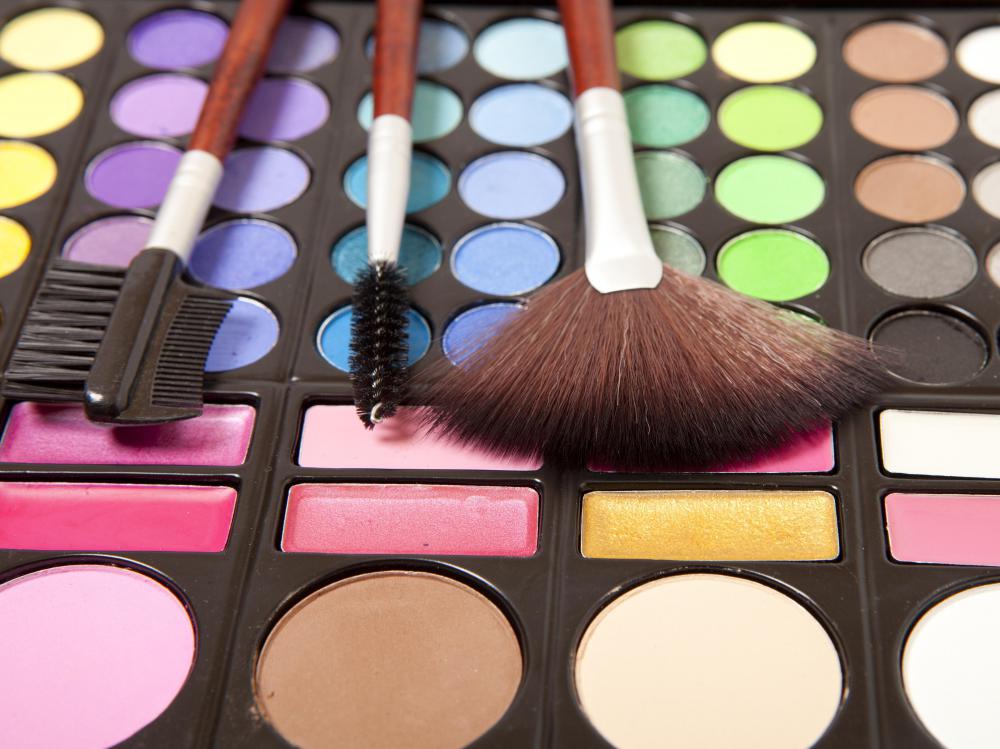At WiseGEEK, we're committed to delivering accurate, trustworthy information. Our expert-authored content is rigorously fact-checked and sourced from credible authorities. Discover how we uphold the highest standards in providing you with reliable knowledge.
What are Hypoallergenic Cosmetics?
Hypoallergenic cosmetics are cosmetics that purport to be very non-reactive in relation to allergies people might have to certain ingredients. The idea being that while some cosmetics include allergens, hypoallergenic cosmetics do not, making them more suitable to very reactive people. In fact, however, the term is largely a marketing gimmick, as there are no regulations for the term, and it guarantees nothing in particular.
The term hypoallergenic cosmetics was come up with for use in an ad campaign in 1953, indicating that the line was less likely to cause allergic reactions that other lines. At the time, hypoallergenic cosmetics were determined largely by testing on animals. Instead of humans, animals could be submitted to large doses of the cosmetic, usually applied to mucus membranes like the nose, mouth, or eyes. Rabbits are the most common animal to be used, but mice and rats are also sometimes used. If the animals demonstrate a reaction to the product, often different ingredients would be sought out, while if they showed no reaction the product would be labeled hypoallergenic.

In subsequent decades, the acceptability of animal testing diminished, with advocacy groups railing against cosmetics companies that tested on animals. As a result, many companies came up with alternate methods of determining hypoallergenic cosmetics, usually using the already large body of knowledge about product ingredients to avoid problem items. These days most products are labeled both cruelty-free, indicating a lack of animal testing, and hypoallergenic.

By and large, however, hypoallergenic cosmetics include no different ingredients than those that aren’t labeled such. While years ago it was true that cosmetics might include especially harsh chemicals and ingredients likely to produce an allergic reaction, these ingredients are virtually non-existent in modern cosmetics. So seeing hypoallergenic cosmetics labeled as such is really just a marketing scheme, unlikely to represent any extra research or focusing on protecting consumers against allergens. In some few cases it may indicate that there are no overt allergens in the product, so for example, something that included papaya or pineapple would be unlikely to be labeled as hypoallergenic, since they are such common allergens.
Over the years, there have been a number of different pushes to come up with an FDA-approved system by which companies could call their products hypoallergenic cosmetics. By regulating it, the term could gain some real traction, referring to a system of testing or a list of approved ingredients, or some other real benchmark that could act to protect consumers. The FDA first pushed such a system in 1974, and by 1975 had come up with a comprehensive system for certification.
The point of the certification process was to reduce confusion on the part of consumers, most of whom already assumed the term referred to some sort of certification. It required some comparative tests and other safeguards. Within a year, however, both Clinique and Almay had challenged the FDA in court, and the courts held that the FDA could not require a certification process, because they had not adequately shown that consumers were confused about the use of the term on products. Since then, regulation has occasionally been attempted again, but to no avail.
The current situation of hypoallergenic cosmetics, then, is that as a term it is used entirely at the discretion of the producers. As such, it should not be used by consumers as a way of determining whether or not they will have an allergic reaction to a product. However, since the FDA requires cosmetics manufacturers to list their ingredients on their labels, conscious consumers can check ingredient lists to see if products contain anything they are allergic to, greatly reducing the risk of reactions.
AS FEATURED ON:
AS FEATURED ON:












Discussion Comments
Fortunately, if you need help with obtaining fuller lips, you can still use lip plumpers. You just should take the time and read the product labels, because not all brands include questionable ingredients.
The safest and easiest way to make sure your lip plumper is non-toxic is to buy from a reputable cosmetic company that specializes in producing natural products, or you can make your own lip plumper at home! It's fast, it's easy and the final product will probably turn out to be more economical than something you would buy at the store.
Post your comments